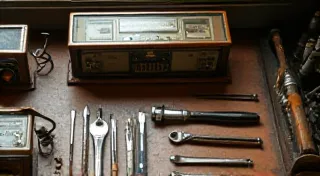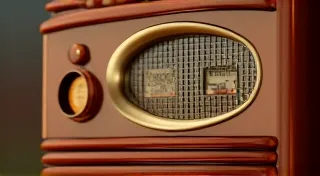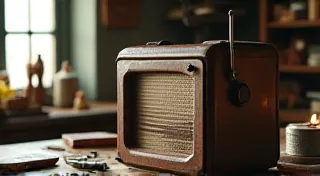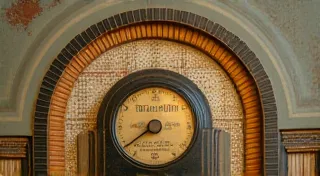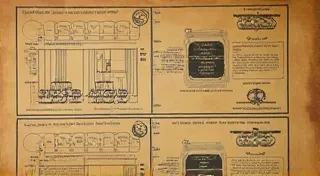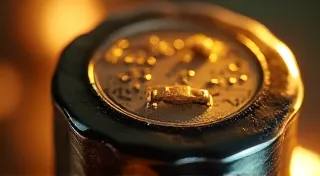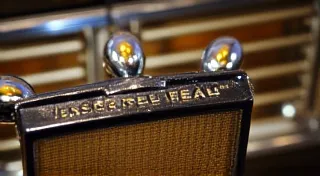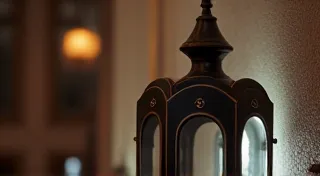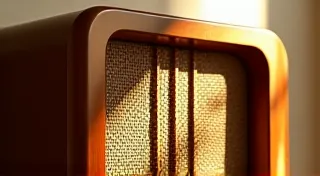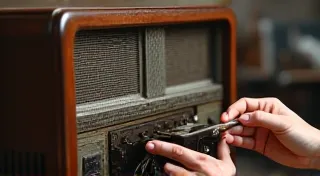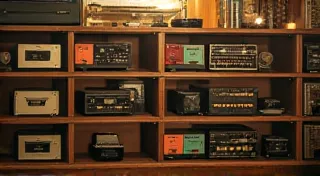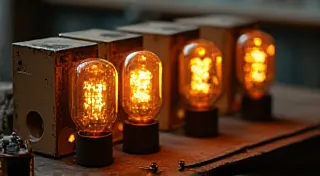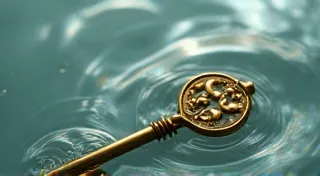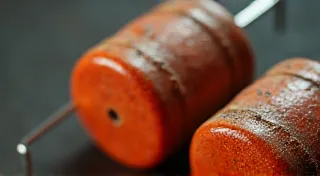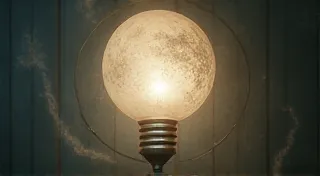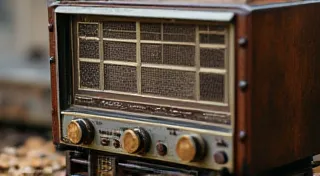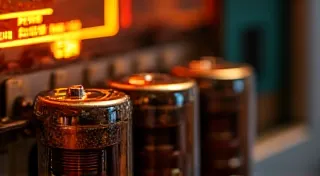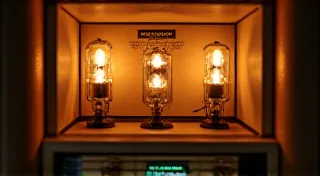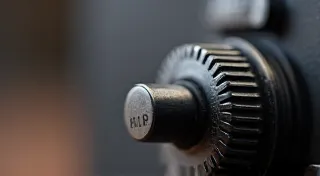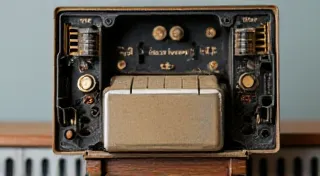Restoring Antique Radios - Tube Based
Your comprehensive guide to repairing and restoring vintage tube-based radios. Learn the art of radio restoration and breathe new life into these iconic pieces of history.
Welcome to the World of Vintage Tube Radios
There's a unique magic in the warm glow and crackling sounds of a vintage tube radio. More than just a piece of technology, these radios represent a bygone era of craftsmanship, design, and the thrill of connecting with the world through the airwaves. If you're captivated by the allure of these antique radios, you've come to the right place. This website is dedicated to the art and science of radio repair and radio restoration, providing guides, resources, and inspiration for enthusiasts of all levels.
The resurgence of interest in vintage electronics is driven not just by nostalgia, but also by a growing appreciation for quality and longevity. Modern consumer electronics are often designed with planned obsolescence in mind, while these classic tube radios were built to last. They're testaments to a time when manufacturers prioritized durability and artistry. Restoring these radios is not just about fixing a broken machine; it's about preserving a piece of history and rediscovering the joy of a simpler time.
Whether you're a seasoned electronics expert or a complete beginner, you're likely asking yourself: Where do I start? This website is structured to cater to a wide range of skill levels. We’re here to demystify the process, guiding you through the intricacies of radio restoration step by step. Understanding the basic principles, identifying common problems, and acquiring the right skills are all crucial to success. Let's delve into the fascinating journey of restoring these amazing devices.
Essential Skills and Knowledge
Before you dive into your first restoration project, it's vital to understand some core concepts. These radios are complex and utilize high voltages, so safety is paramount. Our guide to Safe Radio Restoration Practices provides essential information and precautions to ensure a safe working environment. Neglecting safety can lead to serious injury, so please read it carefully.
A foundational understanding of electronics is also helpful. Knowing how circuits work, what the various components do, and how to use basic test equipment (multimeter, signal generator) will significantly improve your chances of success. While we provide detailed explanations and tutorials, a general electronics background will accelerate your learning.
One crucial element often overlooked is the importance of proper identification. Knowing the manufacturer and model of your radio is the first step in understanding its design and finding the correct parts and schematics. Our guide to Identifying Radio Manufacturers will help you decipher markings and logos, unveiling the story behind your vintage treasure.
The functionality of the radio is tied directly to the types of components used and how they work together. It's essential to understand the role of individual parts like the electrolytic capacitors which are discussed in detail in The Importance of Electrolytic Capacitors in Radio Restoration. You need to understand the role of resistors in these circuits too, and The Role of Resistors in Antique Radio Circuits provides exactly that.
Facing Common Restoration Problems
Every vintage radio presents unique challenges. Common issues include dried-up paper components, corroded contacts, and faulty tubes. Our section on Common Radio Restoration Problems & How to Fix Them addresses these challenges head-on, offering practical solutions and troubleshooting tips. Many times, seemingly simple issues are caused by the degradation of paper components which you will learn about in Dealing with Dried-Up Paper in Antique Radios.
Tubes, the heart of these radios, are also prone to failure. Learning to Testing Antique Radio Tubes is an essential skill. A faulty tube can manifest as hum, distorted audio, or complete silence. Proper testing reveals whether the tube needs replacement or is contributing to another issue.
Often, hum is a serious problem that demands investigation. Our guide to Troubleshooting Hum in Tube Radios outlines a systematic approach to identifying and eliminating this annoying interference. It covers everything from power supply issues to grounding problems. Also, don't forget about the important function of Understanding and Replacing Transformers in Antique Radios as it is critical to proper operation.
Preserving the Aesthetics – Cabinets and Materials
The visual appeal of a vintage radio is just as important as its functionality. The cabinet, often crafted from wood or Bakelite, is a vital part of the overall restoration project. Restoring the cabinet requires a different set of skills, focusing on cleaning, polishing, and repairing damage. Restoring Antique Radio Cabinets delves into the specifics of working with wood, Bakelite, and other common materials. If you've got a Bakelite radio, the specifics of Bakelite Radio Restoration: Preserving the Iconic Material are a must.
Decoding the Blueprint – Schematics and Alignment
Understanding the radio's wiring diagram, or schematic, is absolutely essential for any serious restoration work. These diagrams can be complex and intimidating, but with practice, you can decipher them and use them to diagnose problems and make repairs. Our guide, Deciphering Radio Schematics: A Step-by-Step Guide, breaks down the process into manageable steps.
Once the radio is fully restored and functioning, the final step is often alignment. This process fine-tunes the radio's circuits to achieve optimal performance and sensitivity. Understanding radio alignment involves adjusting coils and capacitors to optimize signal reception and frequency response. Learn about Understanding Radio Alignment: Improving Performance for more information.
Finding the Right Pieces – Sourcing Antique Radio Parts
Replacing damaged or missing parts can be a significant challenge. Antique radio parts are often difficult to find and can be expensive. Fortunately, a thriving community of suppliers and enthusiasts exists to support the restoration hobby. Our guide, Sourcing Antique Radio Parts: Where to Find Them, provides a comprehensive list of sources, tips for finding rare parts, and advice on dealing with suppliers.
Working with the Radio's Core – Chassis Handling
The chassis is the backbone of the radio, holding all the vital components. Handling the chassis requires care to avoid damage. The guide to Working with Vintage Radio Chassis: Handling and Cleaning covers essential techniques for safe handling, cleaning, and corrosion removal. These techniques can prevent further degradation and prepare the chassis for restoration.
Spinning Back Time – Replacing Radio Dials
The dial is the face of the radio, the element the user interacts with. Replacing a dial can be tricky, requiring careful alignment and a delicate touch. Our tutorial on Replacing Radio Dials: A Step-by-Step Tutorial provides a clear and concise guide to this often-challenging task.
Reviving the Sound - Radio Speaker Restoration
No radio is complete without a working speaker. The speakers themselves often need restoration too. Learn how to Restoring Antique Radio Speakers: Cones and Voice Coils and get the best sound possible from your vintage radio.
Transmuting Rust – An Artistic Approach
Sometimes, the most rewarding part of restoration is seeing a heavily corroded or neglected radio brought back to life. The article The Alchemist's Workshop: Transmuting Rust into Resonance shares inspiration and techniques for tackling the toughest restoration projects, revealing the beauty hidden beneath the years of neglect. It's about more than fixing a machine; it’s about revealing its inherent beauty.
Tracing the Signals – Understanding Signal Paths
Delving into the intricacies of a radio's signal path can unlock deeper understanding and improved troubleshooting skills. Filament Dreams: Mapping the Constellations of Vintage Signal Paths provides a fascinating exploration of the radio’s inner workings, offering insights for those seeking a more comprehensive grasp of their operation.
Echoes in Time – The Static of Memory
Vintage radios are not just machines; they’re vessels of history. Our evocative piece, The Static of Memory: Echoes in Vacuum Tubes, explores the romanticism of restoring these time capsules and connecting with the past through the sounds and stories they hold.
